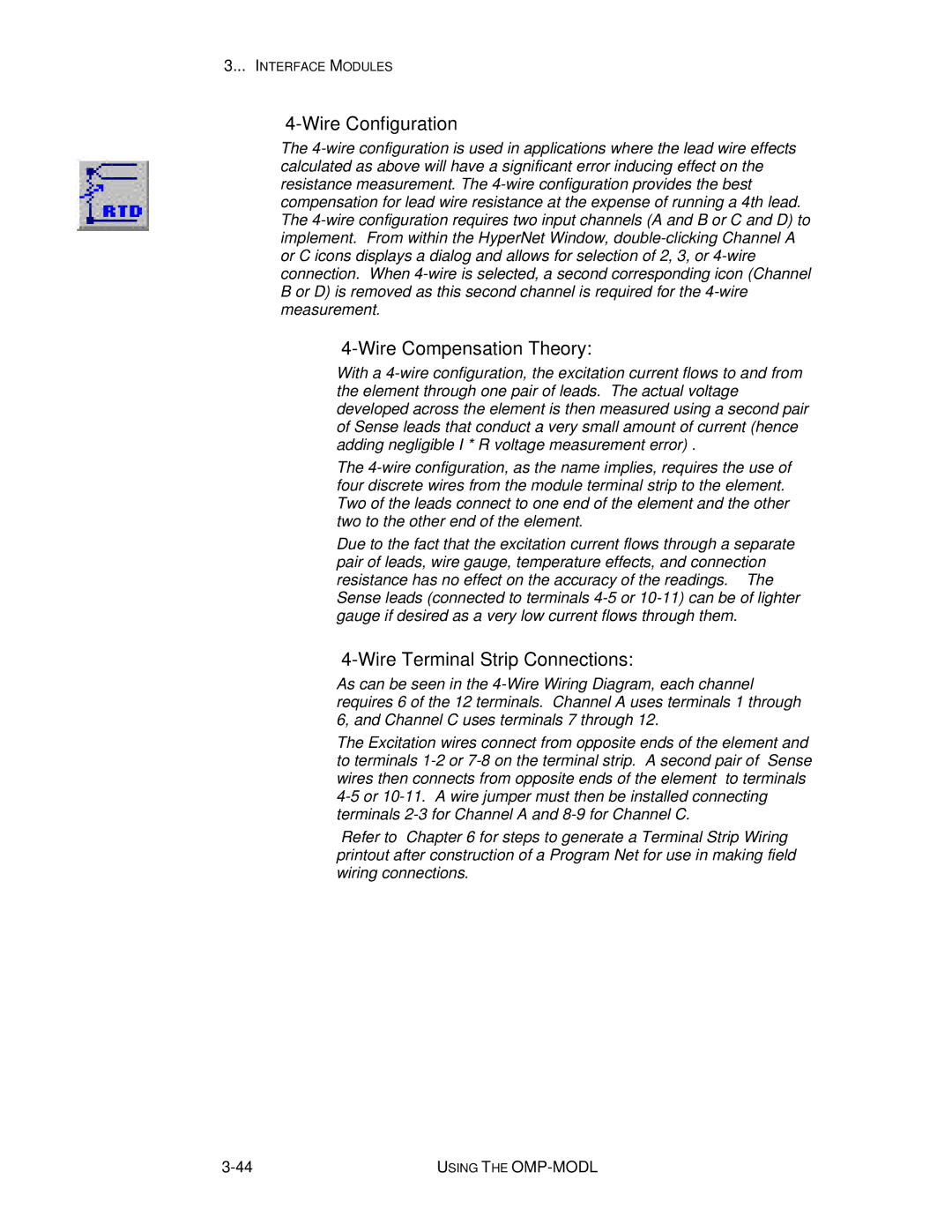
3... INTERFACE MODULES
4-Wire Configuration
The
4-Wire Compensation Theory:
With a
The
Due to the fact that the excitation current flows through a separate pair of leads, wire gauge, temperature effects, and connection resistance has no effect on the accuracy of the readings. The Sense leads (connected to terminals
4-Wire Terminal Strip Connections:
As can be seen in the
The Excitation wires connect from opposite ends of the element and to terminals
Refer to Chapter 6 for steps to generate a Terminal Strip Wiring printout after construction of a Program Net for use in making field wiring connections.
USING THE |
